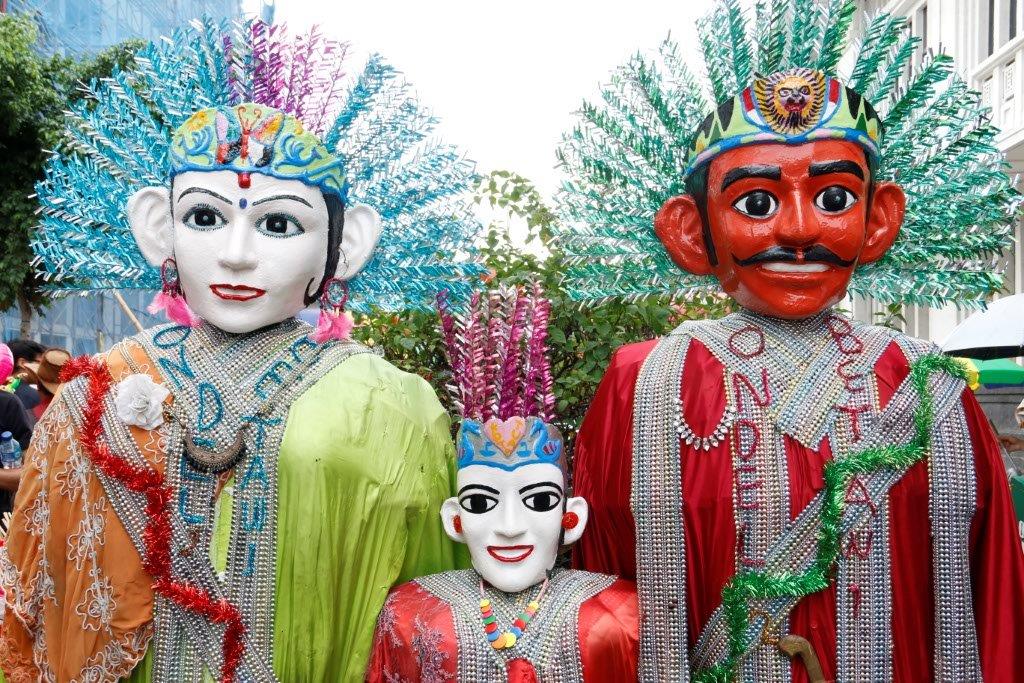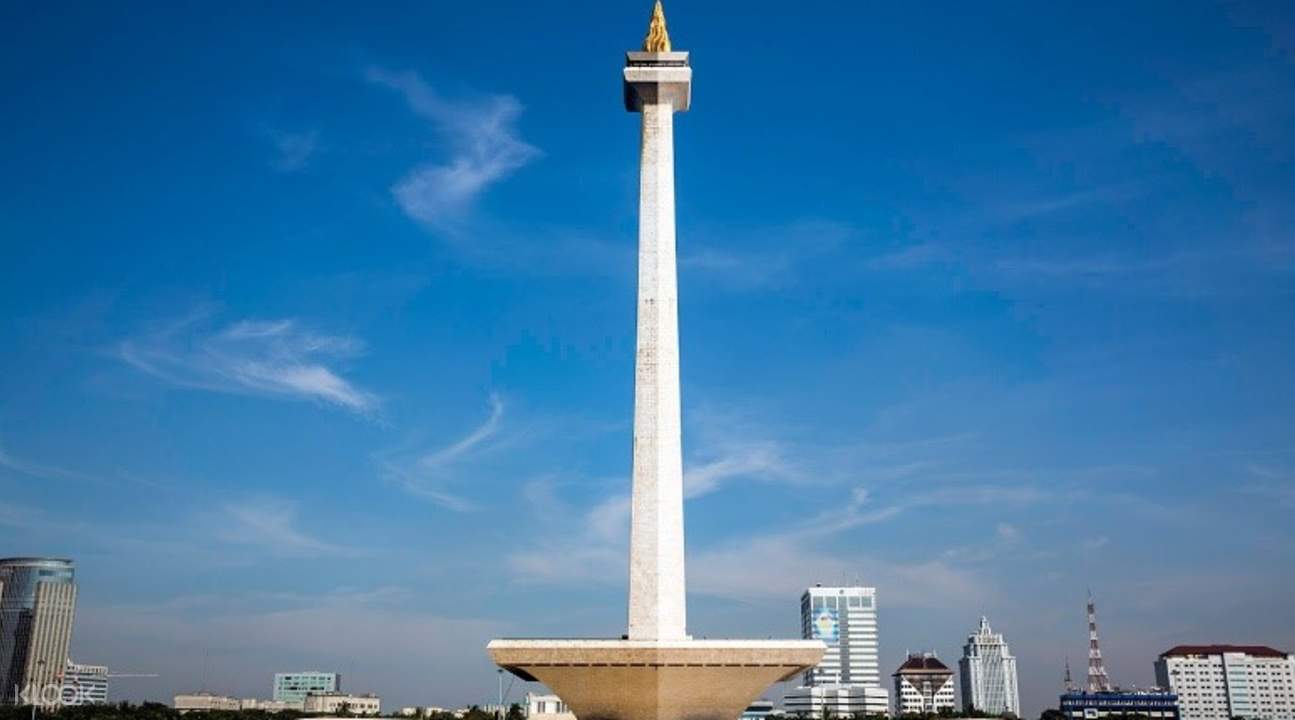Indian classical dance was nurtured in the peaceful environment of the temple. Dance became a mode of communication of the soul with the absolute. Rituals were codified, disciplined and classified. Natya Shastra of Bharata became the science and art of Indian Classical Dance.
The seven Classical Dance styles are:
Bharatanatyam
Bharatanatyam is the classical dance, which is practised in the Southern Indian State of Tamil Nadu, which is east of Kerala, south of Andhra Pradesh and southeast of Karnataka. (See Map of India) The contemporary form of Bharatanatyam evolved during the late 18th or early 19th century. Sadir, which was till then the domain of devadasis (girls who were dedicated to gods), reached its nadir during 1910-1930 with the degeneration of social mores. But during 1926-35, under the championship of E. Krishna Iyer, the dance regained its majesty and came to be known as Bharatanatyam.
Bharatnatyam is compounded from `bah’ for Brava or emotional projection, `Ra’ for raga or melody and `ta’ for tala or rhythm. Natyam means the art of dance.
Bharatanatyam dancers are usually women and, like the Indian sculptures they take their positions from, always dance bent-kneed. It is an extremely precise dance style where a huge repertoire of hand movements is used to convey moods and expressions. A special feature of this dance form is Padams or poems on the hero-heroine theme. The tempo of these love songs is slow and each phase of the performance is crystallized into a specific mood of love. The key postures of this dance form requires the upper part of the body to be erect, the legs bent halfway down with the knees spread out, and the feet positioned like a half-open fan. Practically every member of the body has it’s distinct movement.
Bharatnatyam is intended to be danced solo, but nowadays group work is equally popular. The songs used are composed from the poetic literature of Tamil, Telugu, Sanskrit and to some extent Kannada. Today, Bharatnatyam is not a dance style, but a dance technique – a system, from which came out the other classical dance forms of Mohini Attam and Kuchipudi.
Kathakali
Kerala, a State of southwest India and situated next to (west of) Tamil Nadu, presents to the country one of the most imposing and colourful spectacles of dance – Kathakali. It is heroic, majestic and epic in character. Though this form of art is not more than 300 years old, the actual roots can be traced to 1500 years earlier. It symbolizes the blending of the Aryan and Dravidian cultures and is presumed to be evolved out of the various ancient theatre traditions of the region like Krishnattam, Ramanattam, Koodiyattam, Mudayyetu and Teyyam. Mahakavi Vallathol of Cherutoorthi, which contributed greatly in the revival of this art.
The domain of Kathakali is peopled by superhuman, gods, demons and animals. So the costume and make-up is also elaborate and colourful. Green is for heroic characters, black for evil and bearded countenance depicts Hanuman and Bheema. Being a very exacting art, it demands an energetic and long training for body and facial movement along with body massage and diet control.
Mostly based on mythology and the themes of Ramayana and Mahabharata, a Kathakali performance opens with the sound of thunder from drums which invites the audiences. The performance lasts a night and only men perform Kathakali. As a form of art, Kathakali is a sophisticated spectacle of the supernatural.
Kathak
Kathak is the classical dance, which practiced in North India. It has been best preserved in the cities of Lucknow in Uttar Pradesh and Jaipur in Rajasthanform. Kathak originated in the north and at first was very similar to the Bharatanatyam. However, the principles of Kathak are more on footwork as opposed to the emphasis of hand formations in Bharatnatyam. Persian and Muslim influences later altered the dance from a temple ritual to a courtly entertainment. The influence of the Mughal tradition is evident in this dance form, and it has a distinct Hindu-Muslim texture.
The word Kathak literally means storyteller. In ancient times, storytellers used song and dance to enrich their narration. This took the form of Kathakalakshepam and Harikatha in southern India, and the form of Kathak in the north. Around the 15th century, the dance form underwent a drastic transition due to the influence of Mughal dance and music. By the sixteenth century, the tight churidar pyjama became the staple attire of a Kathak dancer.
Today, the maestros of this dance form include Birju Maharaj and Uma Sharma. Kathak has an exciting and entertaining quality with intricate footwork. The costumes and themes of these dances are often similar to those in Mughal miniature paintings. Rhythm, timing and so footwork are the main planks of Kathak. The musical accompaniment to the 200 ghungurus or bells on the dancer’s feet, are the sarangi and tabla. Kathak is a true fusion of the Hindu and Muslim genius in art and it is the only classical dance of North India.
Manipuri
 Manipuri is the classical dance from the Manipur region in the northeast of India. Manipur is surrounded by Nagaland, Mizoram and Assam. (See Map of India) The dance form evolved in the 18th century with the advent of the Vaishnava faith, from earlier ritual and magical dance forms. Themes from the Vishnu Purana, Bhagvata Purana and compositions from the Gitagovinda predominate the repertoire. Today, dancing remains a key element in the art and ritual of daily life in Manipur.
Manipuri is the classical dance from the Manipur region in the northeast of India. Manipur is surrounded by Nagaland, Mizoram and Assam. (See Map of India) The dance form evolved in the 18th century with the advent of the Vaishnava faith, from earlier ritual and magical dance forms. Themes from the Vishnu Purana, Bhagvata Purana and compositions from the Gitagovinda predominate the repertoire. Today, dancing remains a key element in the art and ritual of daily life in Manipur.
According to the legends of the Meitei tribes of Manipur, when God created Earth, it was lumpy. The seven Lainoorahs danced on this newly-formed sphere, pressing gently with their feet to make it firm and smooth. To this day, when Manipuri people dance, they do not stamp vigorously but press their feet gently and delicately on the ground. The original myths and stories are still practiced by the cultist or priestesses in the form (Maibi) that is the root of Manipuri.
The female ‘Rasa’ dance is based on the Radha-Krishna theme, feature group ballets and solos. The male ‘Sankirtana’ dance is performed to the rhythm of the Manipuri dholak. The musical forms of Manipuri dance reflect the culture of the state of Manipur. The art form primarily depicts episodes from the life of Vishnu and is paradoxically a most tender and vigorous form of expression. Balance and restraint of power are the predominant features of this style. Today, dancing remains a key element in the art and ritual of daily life in Manipur.
Kuchipudi
 Kuchipudi is the classical style of dance of Andhra Pradesh. It took its birth in the village of the same name, originally called Kuchelapuri or Kuchelapuram. It was the result of the Bhakti Movement in the 6th Century, in South India. From its origin, as far back in the 3rd century BC, it has remained a continuous and living dance tradition of this region. The genesis of Kuchipudi art as of most Indian classical dances is associated with religions. For a long time, the art was presented only at temples and that too only for annual festivals of certain temples in Andhra Pradesh.
Kuchipudi is the classical style of dance of Andhra Pradesh. It took its birth in the village of the same name, originally called Kuchelapuri or Kuchelapuram. It was the result of the Bhakti Movement in the 6th Century, in South India. From its origin, as far back in the 3rd century BC, it has remained a continuous and living dance tradition of this region. The genesis of Kuchipudi art as of most Indian classical dances is associated with religions. For a long time, the art was presented only at temples and that too only for annual festivals of certain temples in Andhra Pradesh.
According to tradition, Kuchipudi dance was originally performed only by men and they all belonged to the Brahmin community. The very first group of Brahmain community of Kuchipudi was formed in 1502 AD. Their performers were offerings to the deities and they never allowed women in their groups.
In an era of the degeneration of dance due to exploitation of female dancers. Fifteen Brahmin families belonging to Kuchipude have carried on the tradition for more than five centuries. Renowned gurus enriched the dance form by bringing women. Kuchipudi art was intended as a dance drama requiring a set of character, never as a mere dance by a soloist which is common in present times. This dance drama is sometimes known as Ata Bhagavatham. The plays are in Telugu, and traditionally all roles are taken by men alone.
The most popular Kuchipudi dance is the pot dance in which a dancer keeps a pot filled with water on her head and feet kept on a brass plate. She moves on the stage manipulating the brass plate, with the feet kept on its rim and doing some hand movements without spilling a drop of water on the ground. The violin and a clarinet are the common instruments employed as accompaniment.
Today Kuchipudi like Bharatanatyam has undergone many changes. The present day dancers having advanced training in Kuchipudi style, present this art in their own various individual ways. The bulk of the dancers are woman. In its present day, Kuchipudi has come to be reduced from a dance drama to a dance, from an uplifting theatre experience to a routine stage affair.
Odissi
 Odissi is considered to be one of the oldest surviving dance forms based on archaeological evidence. The traditional dance form of Orissa. Orissa is a State on the mid-north-eastern coast of India. Possibly, Odissi is the oldest classical dance form in the country. It has been mentioned in inscriptions, depicted on sculptures, in temples like the Brahmeswara and the dancing hall of the Sun Temple at Konark. It is a soft, lyrical classical dance, which depicts the ambience of Orissa and the philosophy of its most popular deity, Lord Jagannath.
Odissi is considered to be one of the oldest surviving dance forms based on archaeological evidence. The traditional dance form of Orissa. Orissa is a State on the mid-north-eastern coast of India. Possibly, Odissi is the oldest classical dance form in the country. It has been mentioned in inscriptions, depicted on sculptures, in temples like the Brahmeswara and the dancing hall of the Sun Temple at Konark. It is a soft, lyrical classical dance, which depicts the ambience of Orissa and the philosophy of its most popular deity, Lord Jagannath.
“The Odissi dance has its roots in devotional ritual, and though it really consists of one long theme, starting from the invocation to the deities, the Earth and the gurus, and ending with a highly technical finale of pure dance†(Enakshi Bhavnani).
The Odissi dancers use their head, bust and torso in soft flowing movements to express specific moods and emotions. At one sensuous and spiritual, Odissi has the ability to portray erotic sentiments in a deeply reverential manner. The accompanying music is pure and classical, with graces of both Hindustani and the Carnatic systems. The instruments traditionally used are drums, small cymbals and the flute. Both music and dance have become closely connected with ritual and worship in Orissa. In addition, many places in Orissa, the temples of Bhubaneshwar, Rajarani, Venkateswar, Jagammath and Nat Mandapa, are not only religious centers but are also centers of culture and the arts.
Mohini Attam
 Mohiniyattam is one of the classical dance tradition forms of Kerala. It is said to be older than Kathkali. Literally, the dance of the enchantress, Mohiniyattam was mainly performed in the temple area of Kerala. The word ‘Mohini’ means a maiden who exerts desire or steals the heart of the onlooker, her dance is known as Mohini Attam. Mohini Attam was conceived as a form of social diversion. The themes of the songs were both religious and social.
Mohiniyattam is one of the classical dance tradition forms of Kerala. It is said to be older than Kathkali. Literally, the dance of the enchantress, Mohiniyattam was mainly performed in the temple area of Kerala. The word ‘Mohini’ means a maiden who exerts desire or steals the heart of the onlooker, her dance is known as Mohini Attam. Mohini Attam was conceived as a form of social diversion. The themes of the songs were both religious and social.
The first reference to Mohiniyattam is found in ‘Vyavaharamala’ composed by Mazhamangalam Narayanan Namboodiri, assigned to the 16th century AD. In the 19th century, Swati Thirunalthe king of Travancore, did much to encourage and stabilize this art form. It was Poet Vallathol who revived it and gave it a status in modern times. The theme of Mohiniyattam is love and devotion to god. Vishnu or Krishna is more often the hero. The spectators could feel his invisible presence when the heroine or her maid details dreams and ambitions through the circular movements, delicate footsteps and subtle expressions. In format, this is similar to Bharatanatyam. The movements are graceful like Odissi and the costumes sober and attractive.
Mohiniyattam is essentially a solo dance, but in present times it is performed in groups also. The repertoire of Mohiniyattam follows closely that of Bharatanatyam. Mohiniyattam maintains a realistic makeup and simple dressing. The dancer is attired in the beautiful white and gold bordered Kasavu saree of Kerala. Mohiniyattam follows the Hastha Lakshanadeepika, as a text book for hand gestures. The style of vocal music for Mohiniyattam as is generally seen, is classical Carnatic. The lyrics composed by Maharaja Swati Tirunal and Irayimman Thampi are in Manipravala (a mixture of Sanskrit and Malayalam). Till recently, Thoppi Maddalam and Veena provided the background music of Mohiniyattam. These have been replaced in recent years by Mridangam and Violin.








